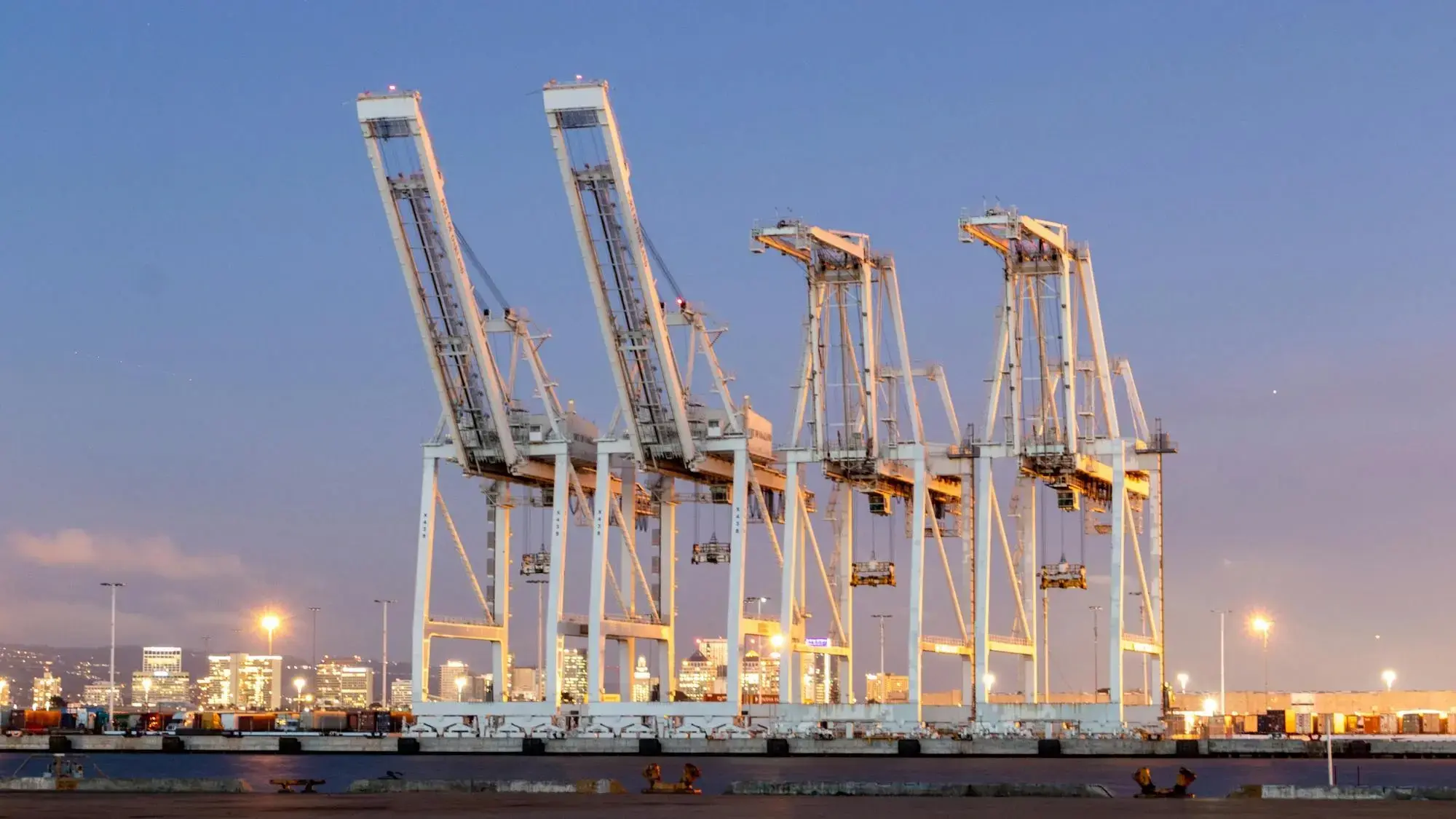
Are your current freight management processes costing you more than you realize? In today's dynamic market, traditional logistics often obscures hidden expenses and inefficiencies that erode your bottom line. The good news? Digital freight management offers a transformative approach. It's not merely an adoption of new technology; it's a strategic investment designed to deliver measurable business value and a substantial ROI for digital freight.
This article will delve into how digitizing your freight operations translates into tangible benefits, offering a clear path to quantifying logistics savings, achieving significant freight efficiency gains, and demonstrating a robust return on investment in shipping technology. We'll explore the key areas where digital transformation shines, providing insights into measuring logistics benefits that drive profitability and competitive advantage.
Understanding the Foundation: What is Digital Freight?
Before we quantify the gains, let's establish a clear understanding of what "digital freight" entails. Moving beyond manual spreadsheets, endless phone calls, and faxed documents, digital freight management leverages advanced technology—primarily through robust Transportation Management Systems (TMS)—to automate, optimize, and streamline every facet of the shipping process.
Think of it as a significant shift from reactive, labor-intensive methods to a proactive, data-driven approach. Instead of manually comparing rates across various carrier websites or tracking shipments one by one, a digital platform provides a unified dashboard for real-time visibility, automated rate comparisons, electronic documentation, and streamlined communication. This fundamental change lays the groundwork for the impressive returns we're about to discuss.
Quantifying the Savings: Direct Cost Reductions
One of the most immediate and impactful areas where digital freight delivers a clear ROI is through direct cost reductions.
Reduced Administrative Overhead and Error Reduction
Consider the sheer volume of administrative tasks involved in traditional freight management: manual booking, meticulous tracking, invoice reconciliation, and data entry. These tasks are not only time-consuming but also prone to human error. A digital freight system automates many of these processes, significantly reducing the labor hours dedicated to logistics administration. For example, while manually comparing rates across multiple carrier websites can take hours per shipment, a modern TMS automates this in seconds, freeing up your team for more strategic work. This administrative efficiency directly translates into quantifying logistics savings in terms of reduced labor costs and overhead.
Moreover, fewer manual touchpoints inherently reduce costly errors. Incorrect billing, misrouted shipments, and delayed paperwork can all result in expensive re-delivery charges, processing fees, and even lost claims. By standardizing and automating these processes, digital freight helps you avoid these unnecessary expenses, solidifying your return on investment in shipping technology.
Optimized Carrier Selection and Rate Negotiation
Are you confident you're always getting the best possible rate for every shipment? Without a digital system, gaining full visibility into the market can be challenging. Digital platforms provide access to broader carrier networks and allow for data-driven carrier performance analysis. They automate the tendering process, sending shipment details to multiple carriers simultaneously and presenting competitive bids side-by-side. This ensures you consistently secure the most competitive pricing.
Furthermore, partnerships with freight brokers, often integrated into these digital platforms, can amplify your savings. As highlighted in our article on the importance of freight brokers, they leverage their expertise in carrier pricing models and the collective buying power of multiple shippers to secure volume discounts that individual businesses might not achieve on their own. This is particularly beneficial for Less-than-Truckload (LTL) shipments, where rates can vary widely.
Mitigation of Hidden Costs
Perhaps one of the most frustrating aspects of traditional logistics is the prevalence of hidden costs – those unexpected fees that sneak onto your invoices. These can include:
-
Accessorial Charges: Fees for services beyond standard transportation, such as liftgate fees, inside delivery fees, or re-delivery charges due to issues at the destination.
-
Demurrage and Detention: Penalties incurred when equipment (trailers, containers) is held longer than the allotted free time at ports, rail yards, or customer sites.
-
Fuel Surcharges: Fluctuating costs added to the base freight rate, directly tied to fuel prices.
As we've explored in a previous blog, proactively managing these costs is crucial. Digital freight systems provide the visibility and tools to anticipate and mitigate these fees. For instance, real-time tracking and automated notifications allow you to proactively manage pickup and delivery schedules, significantly reducing demurrage and detention charges. Similarly, optimized routing, driven by digital tools, minimizes mileage, thereby mitigating the impact of fluctuating fuel surcharges. By effectively addressing these hidden expenses, businesses can potentially achieve a 5-15% reduction in overall freight spend, a powerful demonstration of measuring logistics benefits.
Enhancing Efficiency: Time and Operational Gains
Beyond direct cost savings, digital freight dramatically enhances operational efficiency, saving invaluable time and improving overall logistics performance. These freight efficiency gains directly contribute to your return on investment in shipping technology.
Streamlined Operations and Workflow Automation
Imagine having a bird's-eye view of every single shipment, from the moment it leaves your facility to its final destination. This is the power of real-time visibility provided by digital freight solutions. This level of transparency eliminates guesswork, reduces frantic calls to carriers, and allows for proactive issue resolution. If a shipment is delayed due to unforeseen circumstances, you receive an automated alert, enabling you to adjust production schedules or inform customers without delay. This capability is particularly critical for time-sensitive or perishable goods.
Route Optimization and Load Consolidation
Empty miles and inefficient routes are silent killers of profitability. Digital freight tools leverage sophisticated algorithms to analyze factors like traffic, road conditions, and delivery windows, optimizing routes to minimize mileage, fuel consumption, and transit times. This not only reduces costs but also improves delivery reliability.
Furthermore, these systems excel at identifying opportunities for load consolidation. Combining multiple smaller Less-than-Truckload (LTL) shipments into more cost-effective Full-Truckload (FTL) loads can lead to significant savings. Similarly, strategies like backhauling, where trucks carry return freight instead of traveling empty, are more easily identified and executed through digital planning. Our article on optimizing freight spend emphasizes how these strategic approaches are key to protecting profitability in volatile markets.
Improved Inventory Management
Accurate and timely freight information is the bedrock of effective inventory management. Digital freight solutions provide precise delivery ETAs, allowing businesses to maintain optimal inventory levels. This reduces carrying costs associated with excessive inventory, minimizes the risk of costly stockouts (leading to lost sales or expensive expedited shipping), and improves overall cash flow by avoiding capital tied up in warehousing. With a powerful digital freight management-focused TMS, inbound visibility dramatically improves inventory accuracy and management.
Beyond the Numbers: Strategic Benefits and Customer Experience
The ROI of digital freight extends beyond purely financial metrics, encompassing strategic advantages and a superior customer experience that are vital for long-term business success.
Enhanced Supply Chain Visibility and Resilience
The past few years have underscored the critical importance of a resilient supply chain. Digital freight solutions provide the comprehensive visibility needed to predict and adapt to disruptions, whether they stem from economic shifts, seasonal peaks, geopolitical events (like the Red Sea situation), or natural disasters. This allows businesses to be agile, quickly pivoting and finding alternative solutions during crises, thereby enhancing overall supply chain robustness and competitive advantage.
Superior Customer Satisfaction
In today's market, customers expect timely and transparent delivery. Digital freight enables consistent, reliable delivery performance along with proactive communication about shipment status and any potential delays. This transparency builds trust and significantly enhances the customer experience. Ultimately, reliable logistics contribute directly to customer loyalty, turning satisfied customers into repeat business – a crucial, though sometimes intangible, element of measuring logistics benefits.
Measuring Your ROI: Key Metrics and Data Points
To truly understand shipping technology, you need to track its return on investment. Before implementing digital solutions, start by establishing baselines for your current costs and performance metrics.
Here are some key performance indicators (KPIs) to track:
-
Financial Metrics: Look for reductions in freight cost per unit, decreases in administrative labor costs, and lower accessorial, demurrage, and detention fees.
-
Operational Efficiency Metrics: Monitor improvements in on-time delivery rates, reductions in transit times, increases in load fill rates, and decreases in empty miles.
-
Customer-Centric Metrics: Track customer satisfaction scores related to delivery, reductions in customer complaints about logistics, and increases in repeat customer orders.
Continuous auditing and analysis of these metrics are crucial. They not only validate your ROI digital freight but also help identify further opportunities for optimization, ensuring you continue to reap the rewards of measuring logistics benefits.
Digital Freight as a Strategic Imperative
The evidence is clear: digitizing your freight operations is a powerful investment that delivers significant ROI of digital freight through direct cost savings, unparalleled efficiency gains, and a vastly improved customer experience. It transforms logistics from a burdensome cost center into a powerful competitive advantage.
In an increasingly volatile and unpredictable market, embracing shipping technology isn't just an option; it's a necessity for protecting your margins, future-proofing your business, and ensuring long-term profitability. Ready to explore how digital freight can transform your operations and unlock your business's full potential? Customodal specializes in cutting-edge digital freight solutions designed to deliver measurable results and help you achieve your logistics goals.





